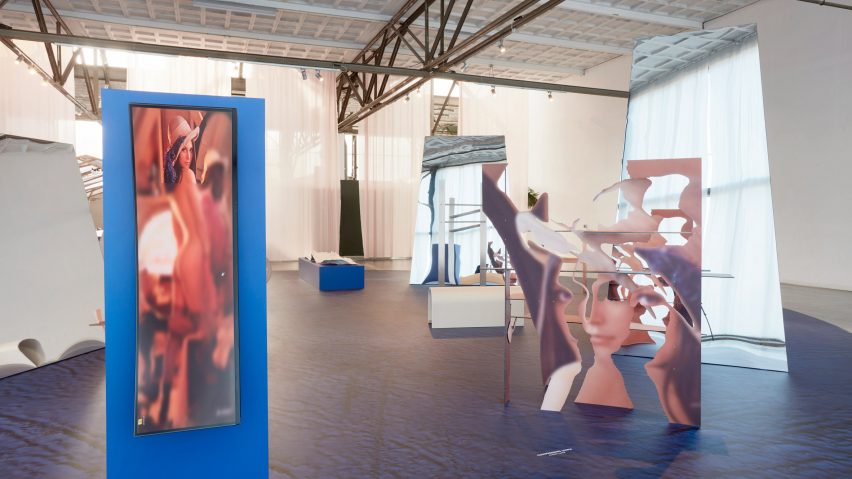
Dutch Invertuals presents products that champion using less
Eindhoven-based design studio Dutch Invertuals has curated an exhibition of 10 objects, to question whether – in the anthropocene era – it is possible to reduce the volume of non-essential products in our lives.
On show last week for Dutch Design Week, Take Away featured a range of unusual products, from lamps made from old clothes, to altars constructed from unwanted household junk.
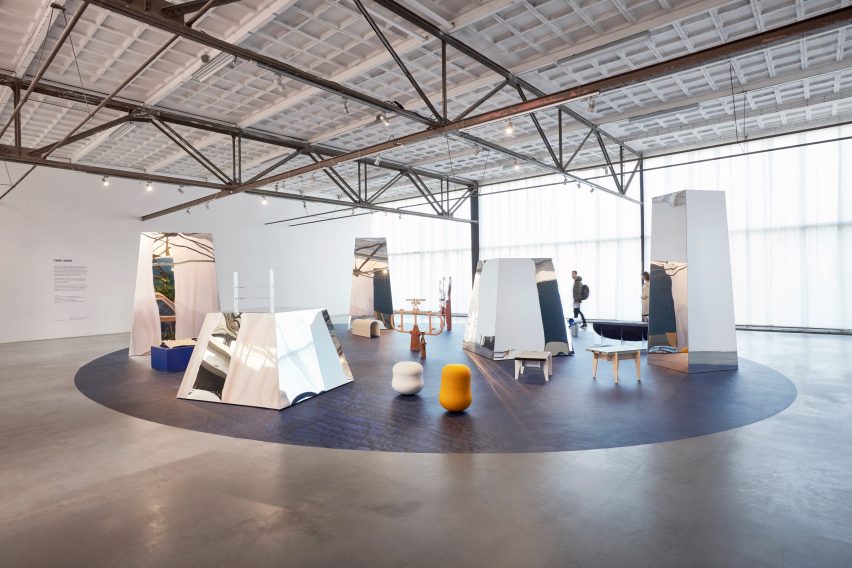
According to Dutch Invertuals founder Wendy Plomp, the aim was to explore whether humans can strive to produce less rather more, particularly as we now entering the first geological era in which human activity is a dominant influence on the earth.
"After decades of abundance and growth, we must now rethink the essence of our true needs," she explained. "Can we ultimately fade out the obsolete and return to it to the elements?"
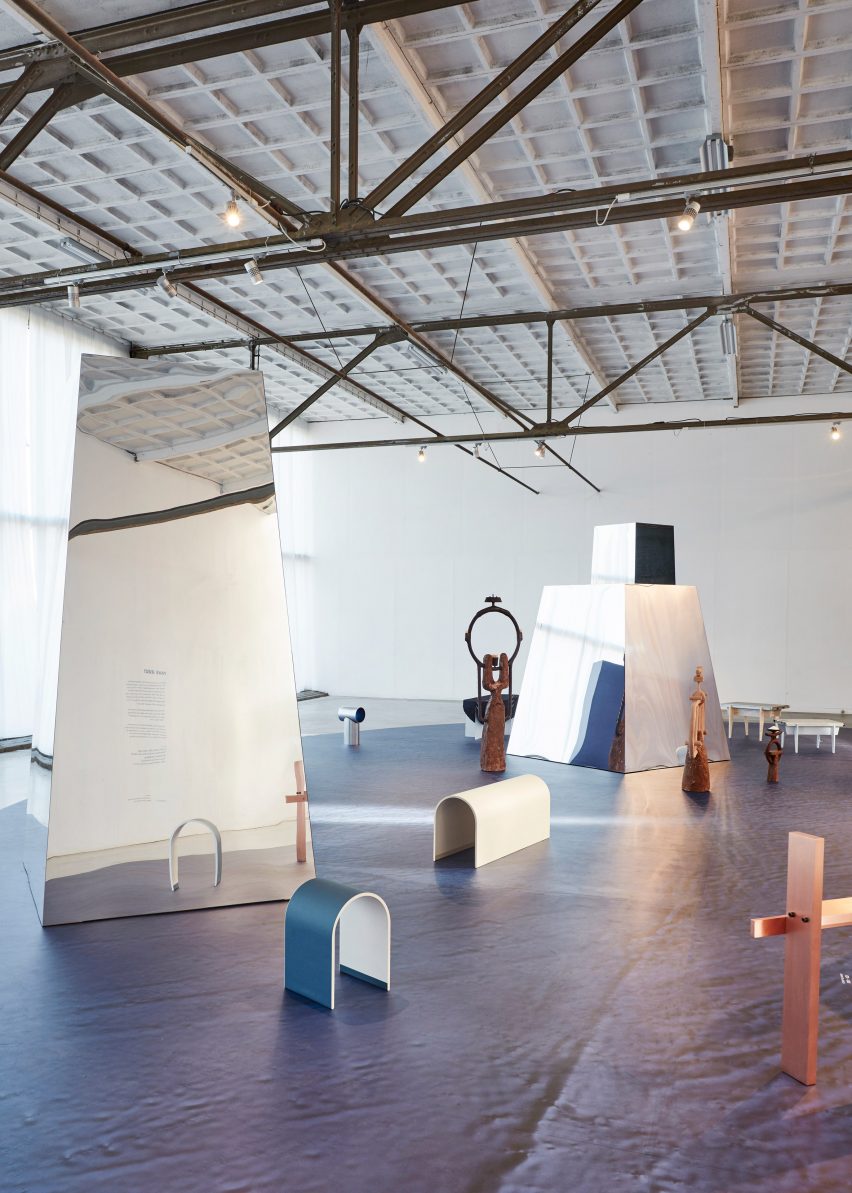
All 10 items on show, each produced by a different designer or studio, is a response to the complications of modern life, covering themes such as overconsumption, digitalisation and the disappearance of craft.
All created with the goal of using less, the experimental projects include new applications of production techniques, new insights, and new ways of making and thinking.
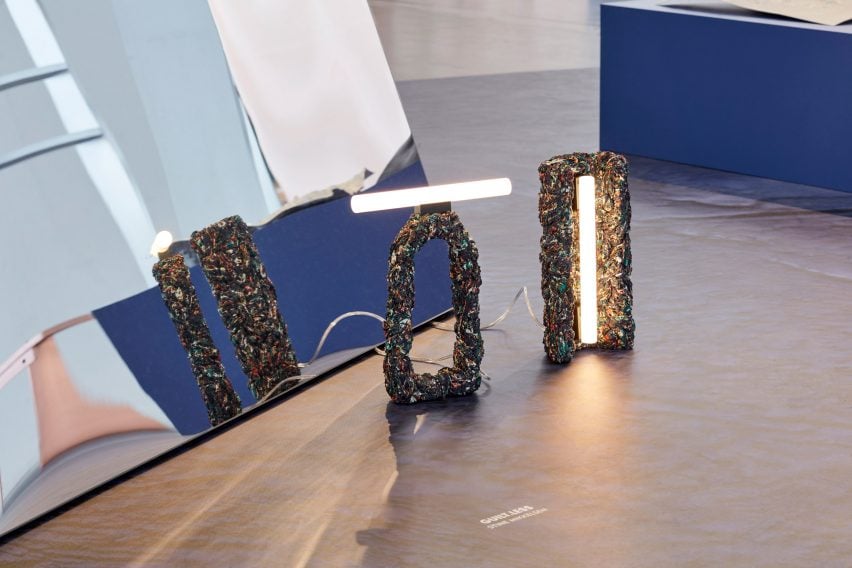
Stine Mikkelsen's Guilt.less lamps, made from unwanted clothes, are designed to highlight the environmental damage being caused by the fashion industry. Mikkelsen hopes that the lamps will help people to realise that the responsibility lies with the consumer and not just the industry itself.
"I want people to reflect on their own consumption habits and through this realise, that every time we buy a piece of clothing it also involves an inherent political position," she explained.
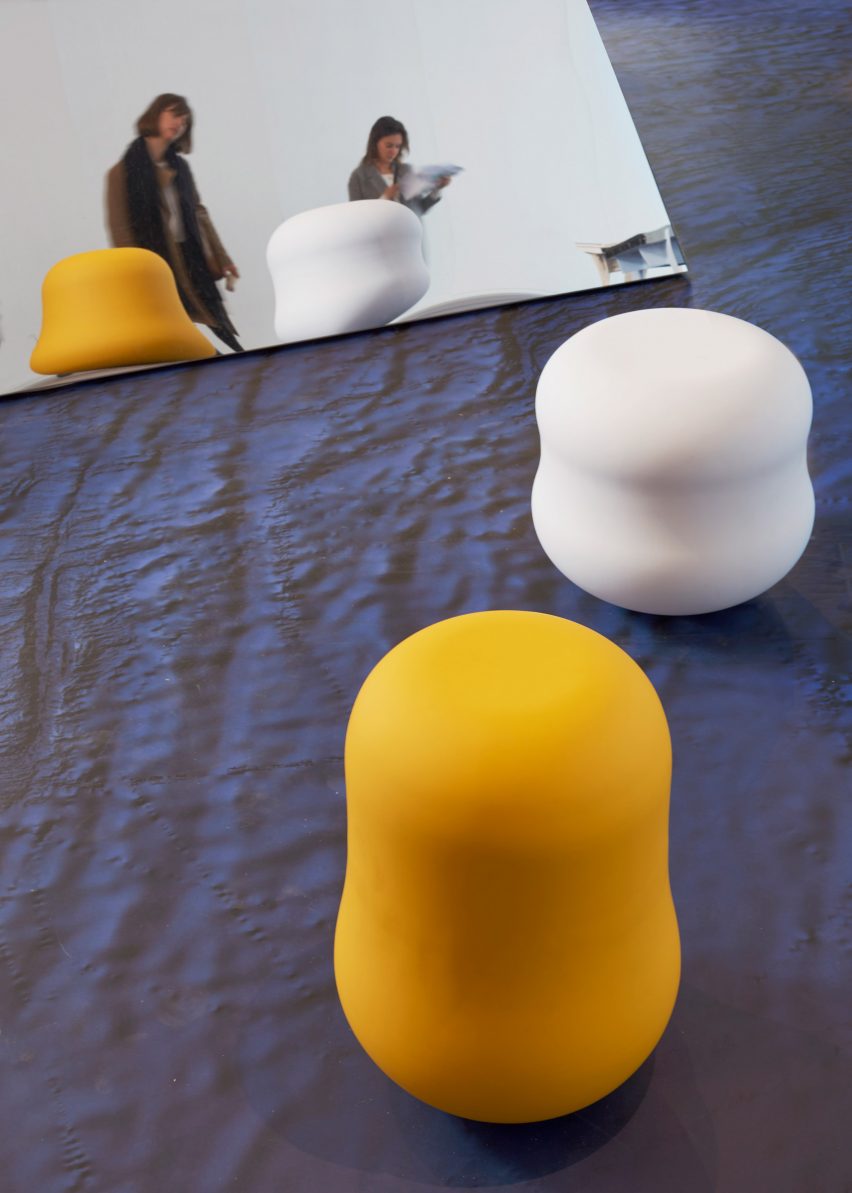
The Wobble Stools were created by Christian Hammer Juhl and Jade Chan in response to concerns about the impact of digitalisation on our physical activity.
"Technology expands our overall mobility, yet it takes over functions that formerly demanded physical effort from us," the designers explained. "We can increasingly control and interact with our environment with only minimal movements, using our fingers, gesture, gaze, voice and even facial expression. Movement became a choice."
The Wobble Stool's abstract form encourages movement and play in the living space. Elsewhere at Design Week, the Design Academy Eindhoven graduates also presented whimsical furniture that responds to people's changing requirements.
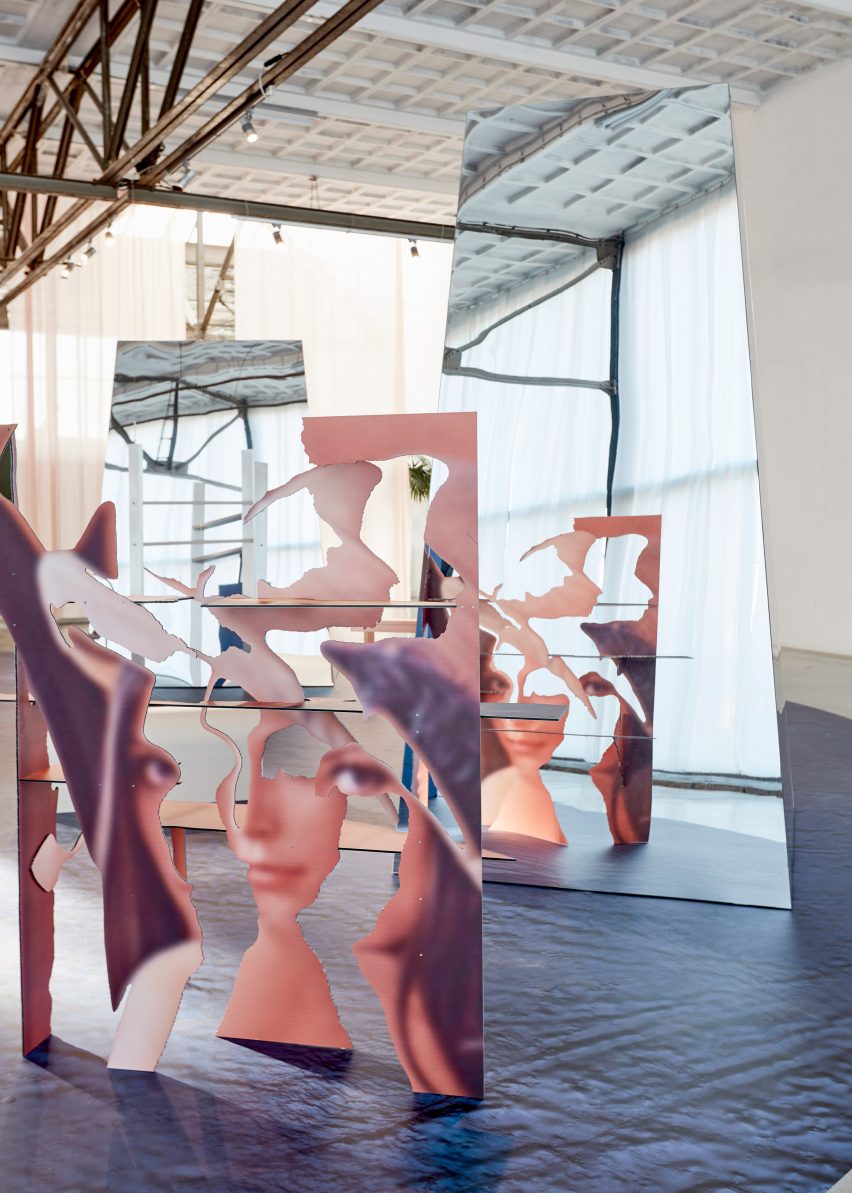
Audrey Large uses 'Lenna', a standard test image widely used for testing data compression algorithms, as a raw material for designing objects which question the translation between digital and material formats.
"For Compressing Lenna, I transform with digital tools already compressed images found on the internet into useless decorative signs of consumption," explained Large. "I thus emphasise the inherent reduction in digital image processing, female representations and design standards."
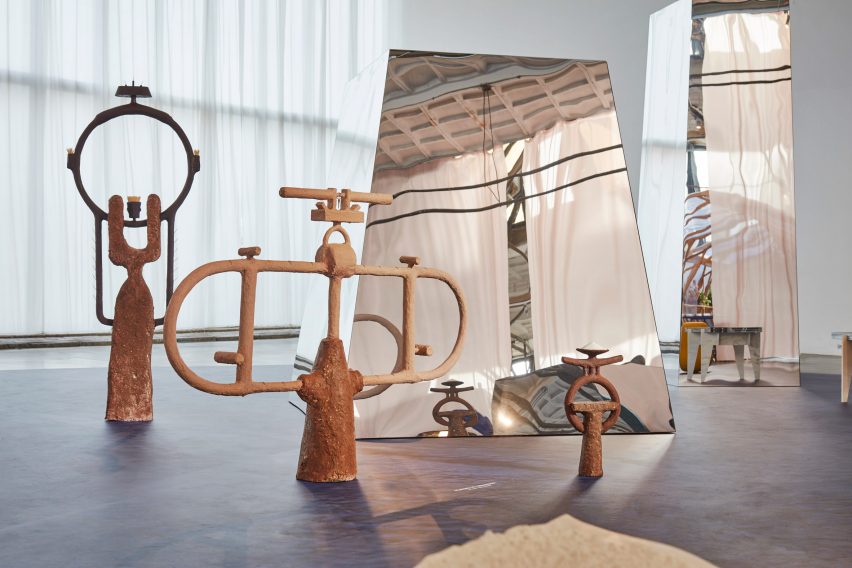
Willem van Hooff created a series of altars made out of non-essential stuff that people keep in their homes. The series is intended to address the absurdity of society's obsession with possessing material objects.
"By creating Prayers to Obsession that expose non-essential stuff that we keep in our homes I hope the audience will become more aware of their true needs," said Van Hooff.

Shaped by removing material from a rectangular block of foam, the monolithic Cork Bench by Onno Adriaanse explores the process of sculpting, embracing unpredictability and intuition in the creative process.
"Without involving machines, I tore off parts bit by bit, leaving my choices visible and discovering the bench's final shape," said Adriaanse. "In this way, every bench becomes a unique object that appears to levitate thanks to its transparent support structure."
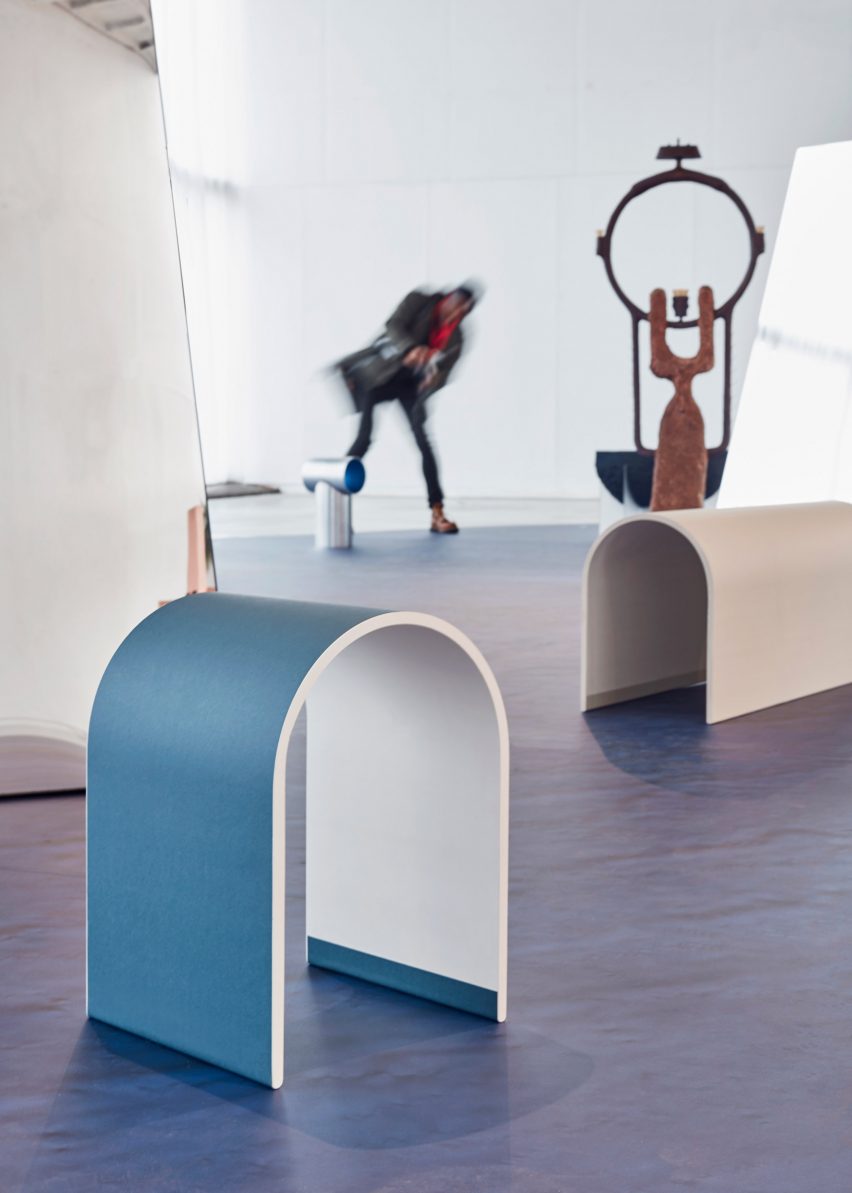
ZwartFrame's Arches made from plaster are the result of the Utrecht-based design collective's quest to find new and unexpected applications for the fully recyclable material. By using it to make one of the oldest and strongest constructive forms, the sculptures manage to use as little of the material as possible.
"Being widely used for the coatings of walls and ceilings, plaster requires a hidden supporting framework," said the collective. "While it is not known as a strong material, we demonstrate with Arches its unexpected load-bearing properties."
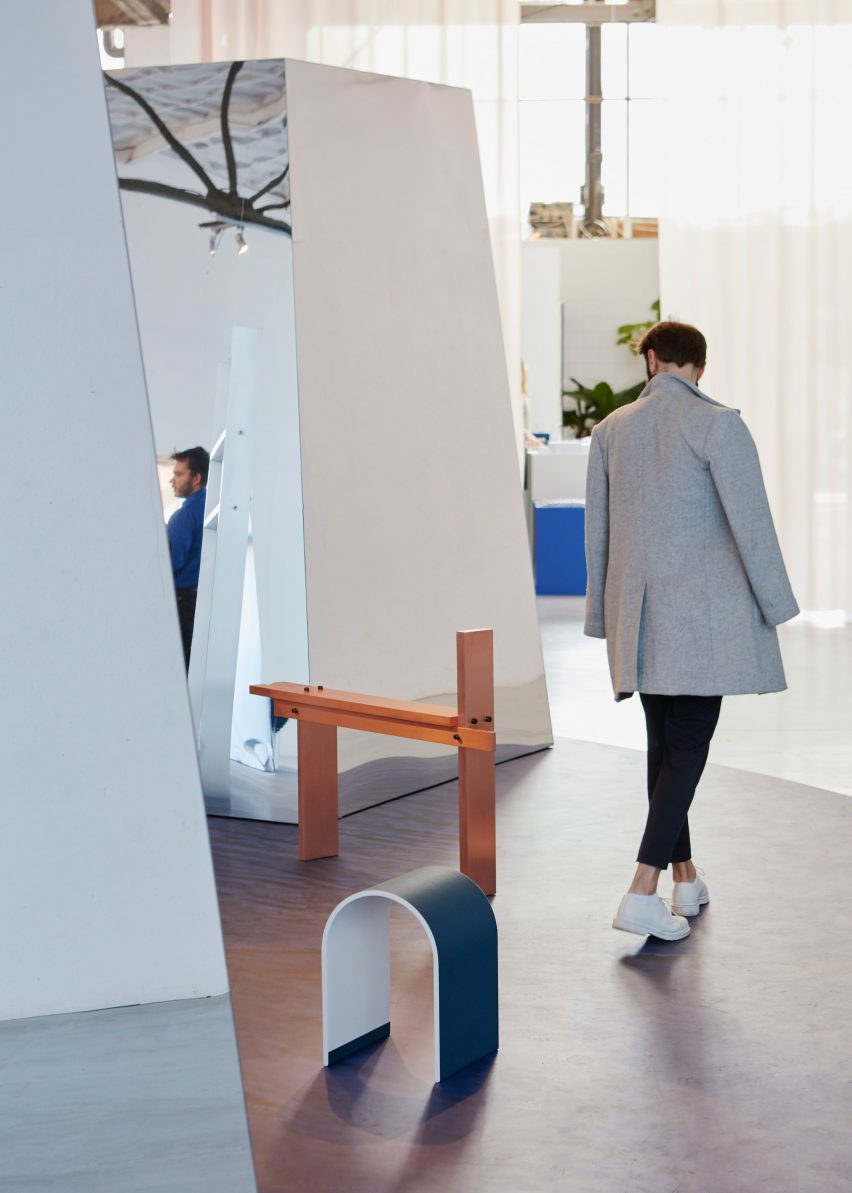
Each part of Johan Viladrich's minimalist sculptural compositions are cut from a standardised flat copper or aluminium bar. When assembled together they create functional structures which resemble the primary forms of a bench and a shelf.
"There are no superfluous elements, everything is visible," explained Viladrich. "I use the mass of metals to create radical structures and re-focus the attention on what makes the essence of design: proportions and connections."
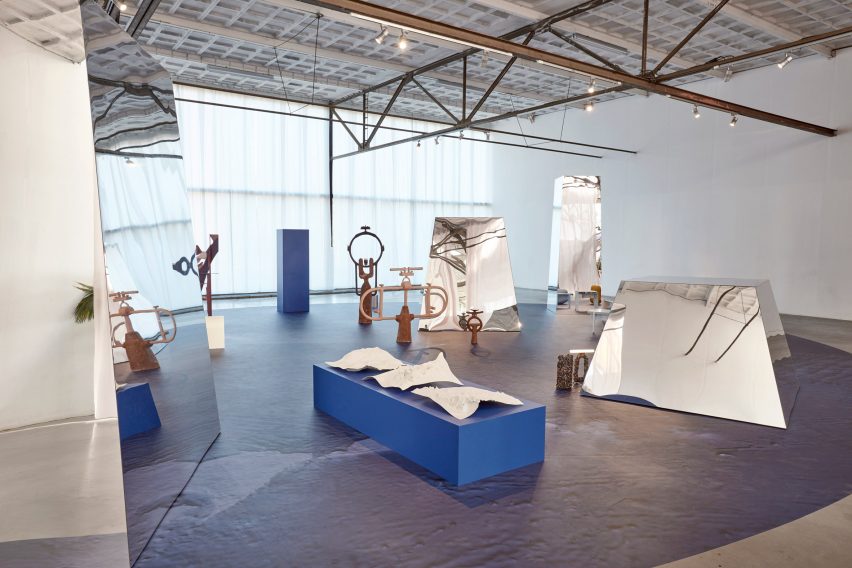
Xandra van der Eijk used advanced technologies that go hand-in-hand with climate change – a laptop, tablet, 3D scanner and a phone with 4G signal – to scan the foot of a receding glacier. The resulting 3D-printed panels document its undulating form.
"The journey, the risk, the awe, the act of documenting and reproducing, all can be seen as a ritual for dealing with my own ecological grief," said Van der Eijk.
"I longed to witness, preserve, and archive this fast disappearing phenomenon that has forever shaped our world."
Thomas van der Sman & Richard Cory's totem-like sculptures are made from machine-manufactured plates and tubes that the designers weld together by hand.
"During our research into the aluminium industry, we could not help but notice craftsmen disappearing where automated systems and production robots take over," said Van der Sman and Cory.
"We strive to connect both the tactile world of a maker and the mechanised aluminium industry, to form a symbiotic relationship where automation and identity are both equally celebrated."
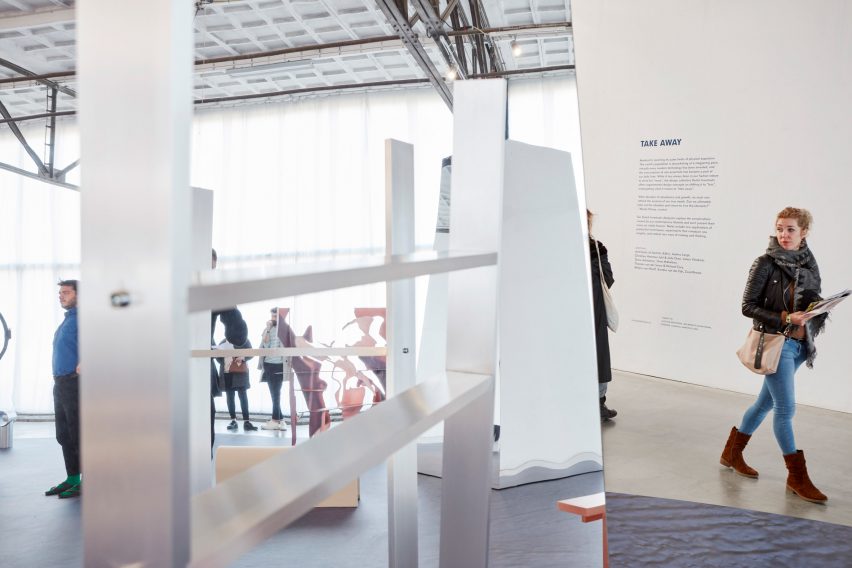
Architects of Identity, known as Edhv, has gathered pieces of hardware that enable our modern technologies and turned them into a set of tables.
"Our digital world that we commonly refer to as cyberspace or the cloud almost lets us believe it's all made out of thin air," they explained. "But the truth is hidden in anonymous buildings with endless rows of power-consuming devices mounted in water-cooled racks."
"The staggering pace at which technology develops, leaves behind a slipstream of redundant greatness awaiting the shredder to be broken down into elements again. The phrase coined lately "Data is the new gold" is in that sense more controversial than we think. These tables are tangible relics in our quest for data."
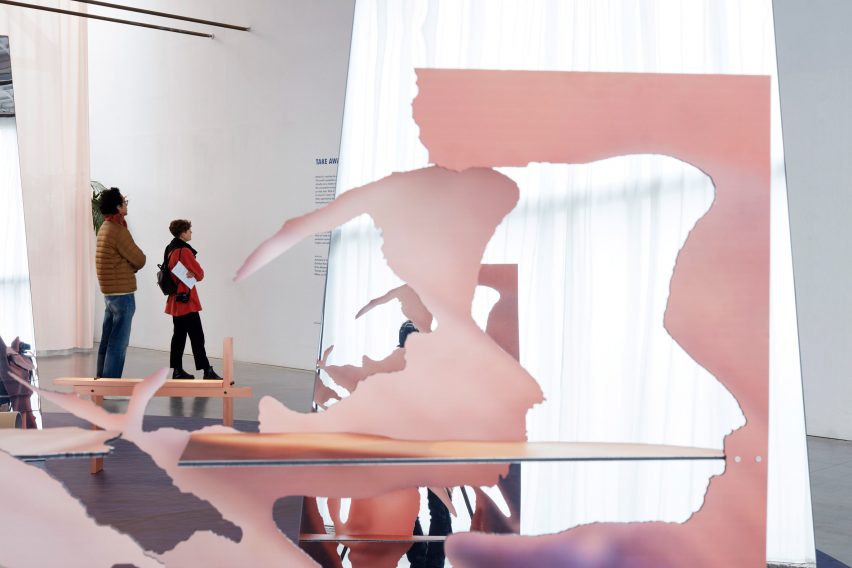
Take Away was showcased at Edhv's studio throughout Dutch Design Week 2018, which ran from 20 to 28 October. The show marks Dutch Invertuals' 10th appearance at the annual design week.
This year's edition also included a talk hosted by Dezeen, which posed the question: can designers shape the anthropocene to prevent global catastrophe?
This topic of the anthropocene was also explored by Dutch Invertuals in an exhibition during Milan design week earlier this year. Called Mutant Matter, the show looked at how man-made materials can be "mutated" by humans.